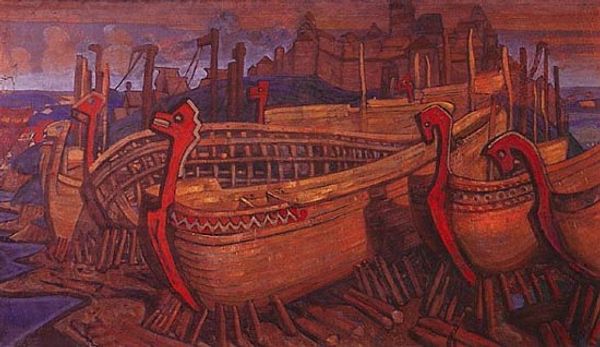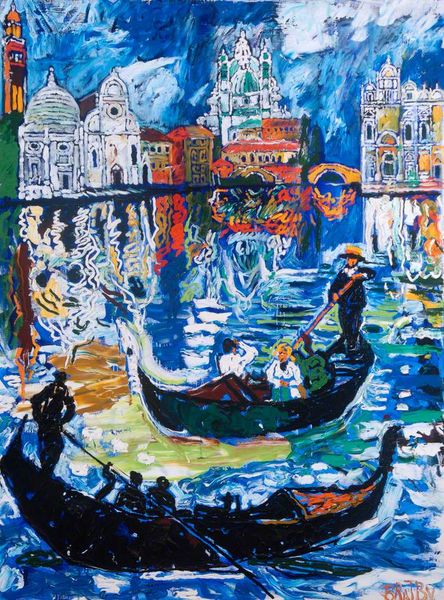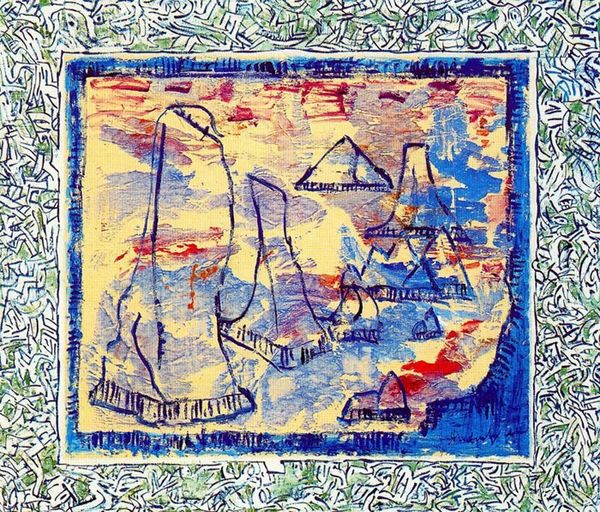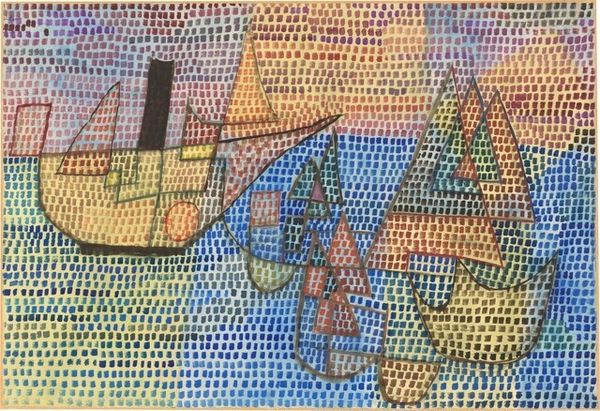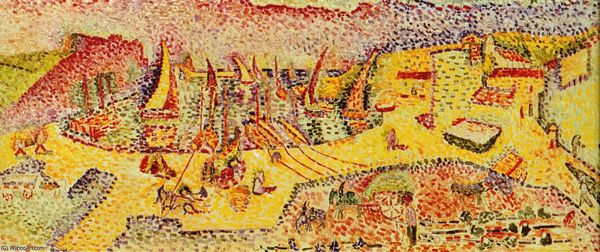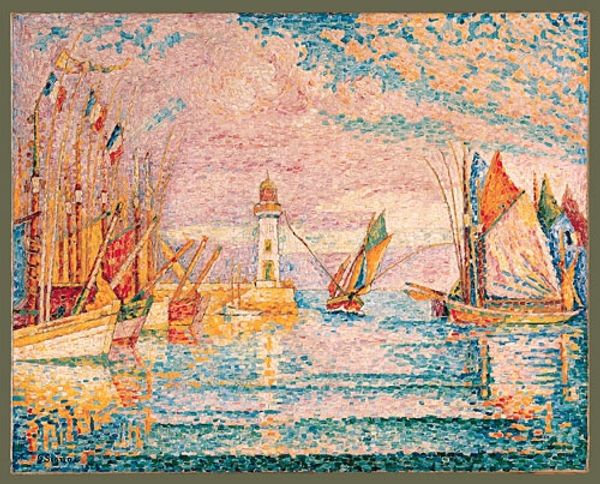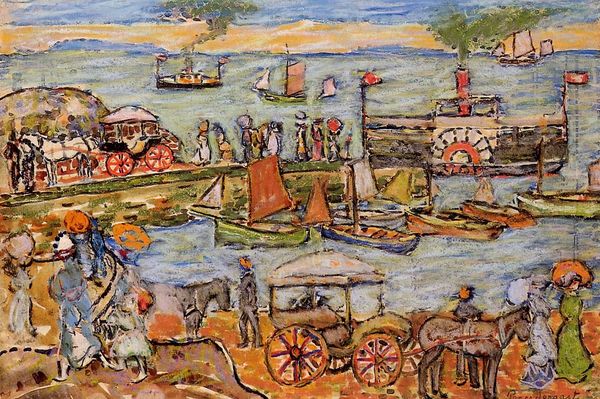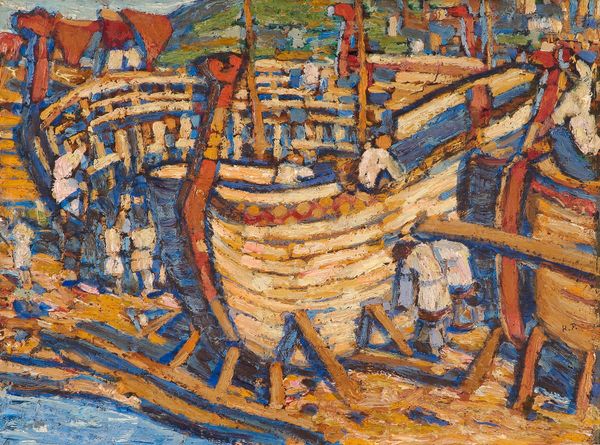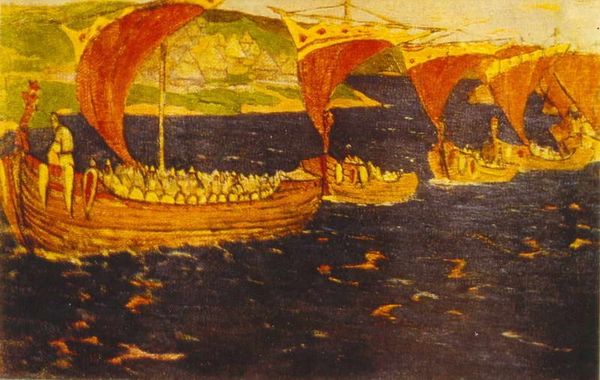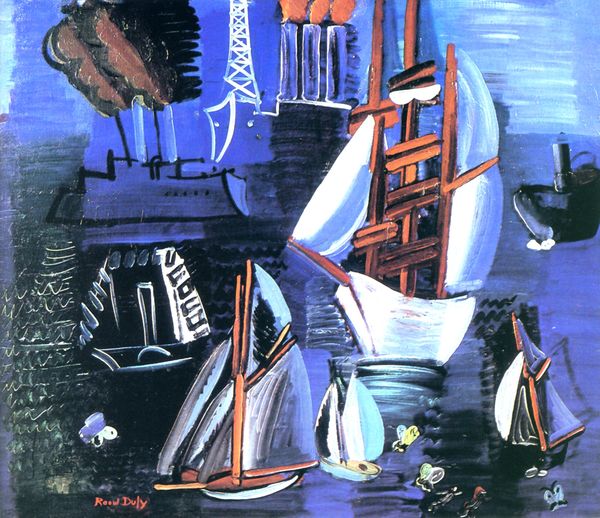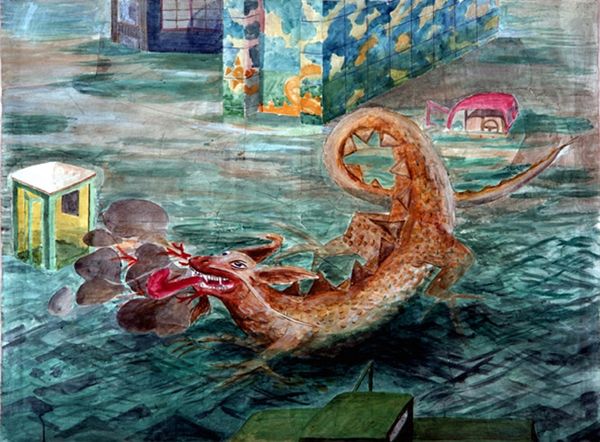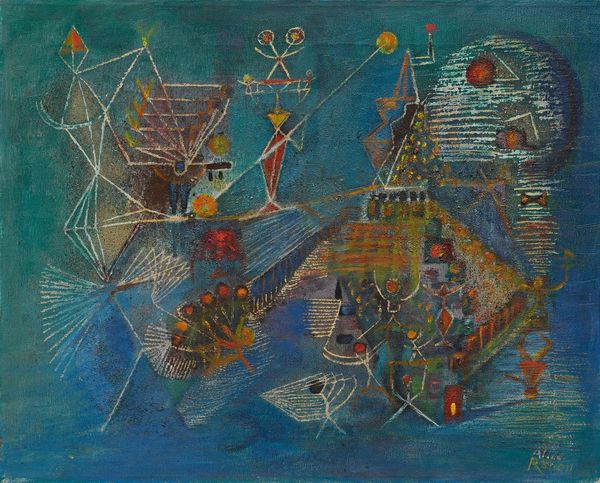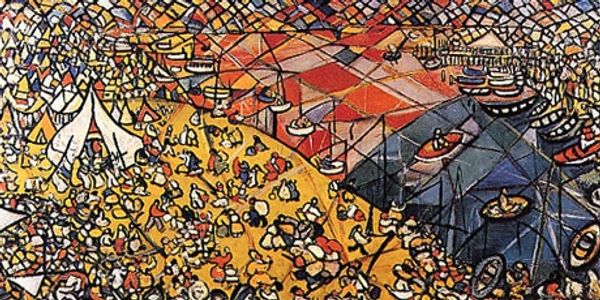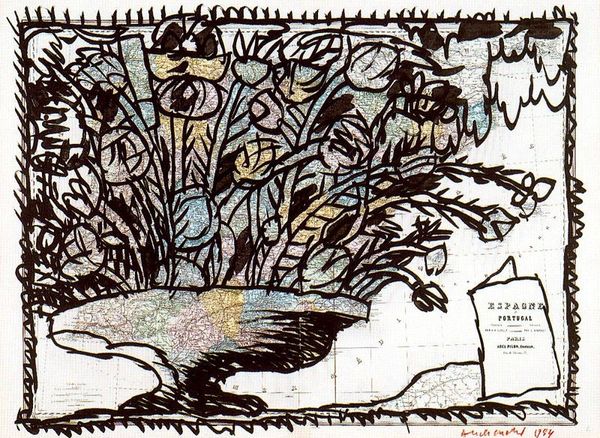
mosaic
#
mosaic
#
boat
#
ship
#
war
#
water
Copyright: Public domain
Curator: The turbulent imagery and raw energy captured in this mosaic really strike you at first glance. Editor: It certainly does. We are looking at "Battle," crafted by Nicholas Roerich in 1906. Roerich, a prominent figure in the Russian Symbolist movement, often intertwined his art with social commentary and spiritual explorations. Curator: Before any exploration, its execution has immediate force, I am intrigued by the almost crude, yet somehow effective, juxtaposition of colors—those striking reds against the various blues suggesting water is no small part of the energy! The artist even forgoes traditional smoothness, allowing each individual tessera to assert its presence. Editor: Indeed. Considering the era, Roerich's artistic pursuits actively rejected traditional aesthetic values. One can interpret "Battle" as a reflection of his socio-political views, an era of burgeoning conflicts and social upheaval. How might this piece converse with the artistic representations of conflict before the First World War? The ships clashing evoke feelings of disruption of existing power structures and class struggles of the Russian people in early 20th Century? Curator: Possibly so, and by deconstructing established aesthetic canons, Roerich arguably aligns himself with a broader tradition of resistance against what would today be called hegemonic cultural and artistic forms. He transforms even conventional depictions of war through its design! This brings us back to those jagged edges that make for a visceral, kinetic experience—a powerful reminder that we, as viewers, cannot easily separate ourselves. Editor: By embracing artistic approaches and techniques, and also confronting themes of societal division and upheaval. Roerich created a powerful narrative reflecting the social context that resonates in current global discourse around conflict. What began simply with formalist interpretations now can perhaps encourage new dialogue! Curator: Indeed! From our brief contemplation, one sees the necessity to appreciate the complexities of art as artifacts.
Comments
No comments
Be the first to comment and join the conversation on the ultimate creative platform.
